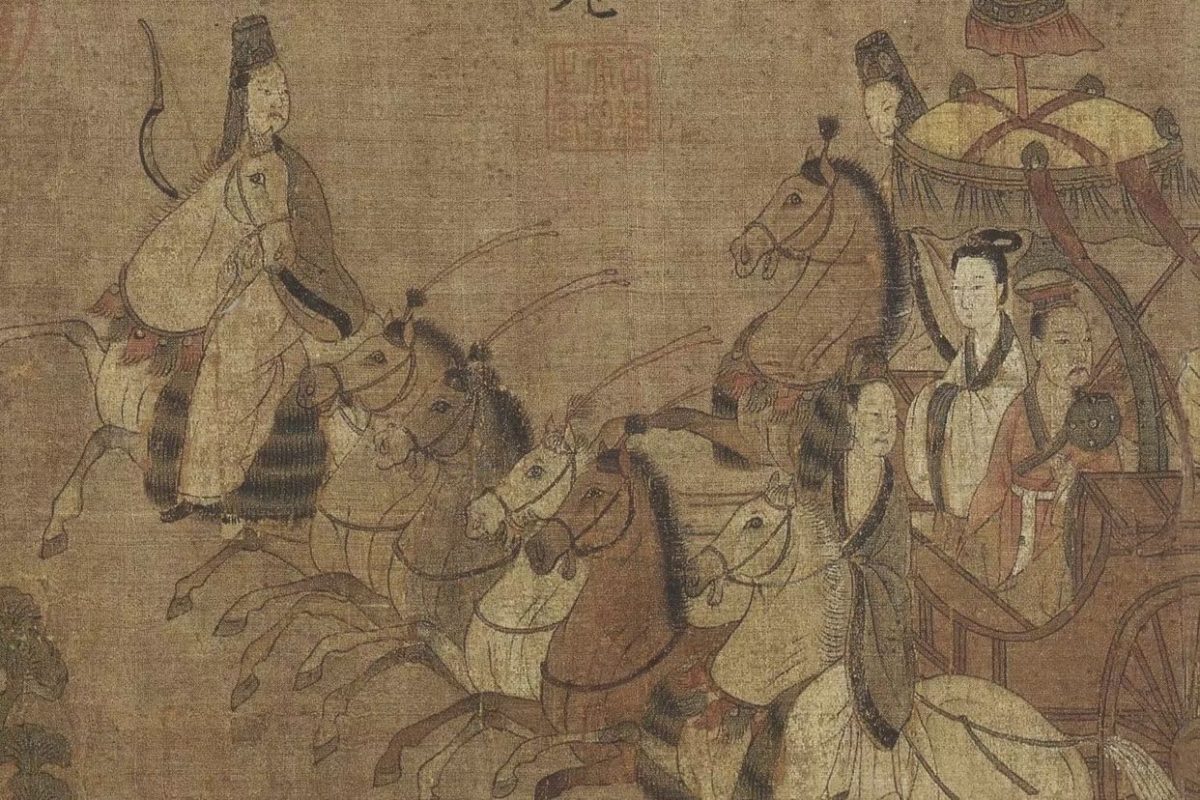The painting Nymph of the Luo River is a work of Gu Kaizhi, a famous painter of the Eastern Jin Dynasty. Gu Kaizhi painted it after reading Cao Zhi’s poetry Nymph of the Luo River. This painting is one of the treasures of classical Chinese painting in terms of its content, artistic structure, character modelling and other methods of expression. The painting now in the National Palace Museum is a copy of Gu Kaizhi’s Nymph of the Luo River by a Song dynasty artist.
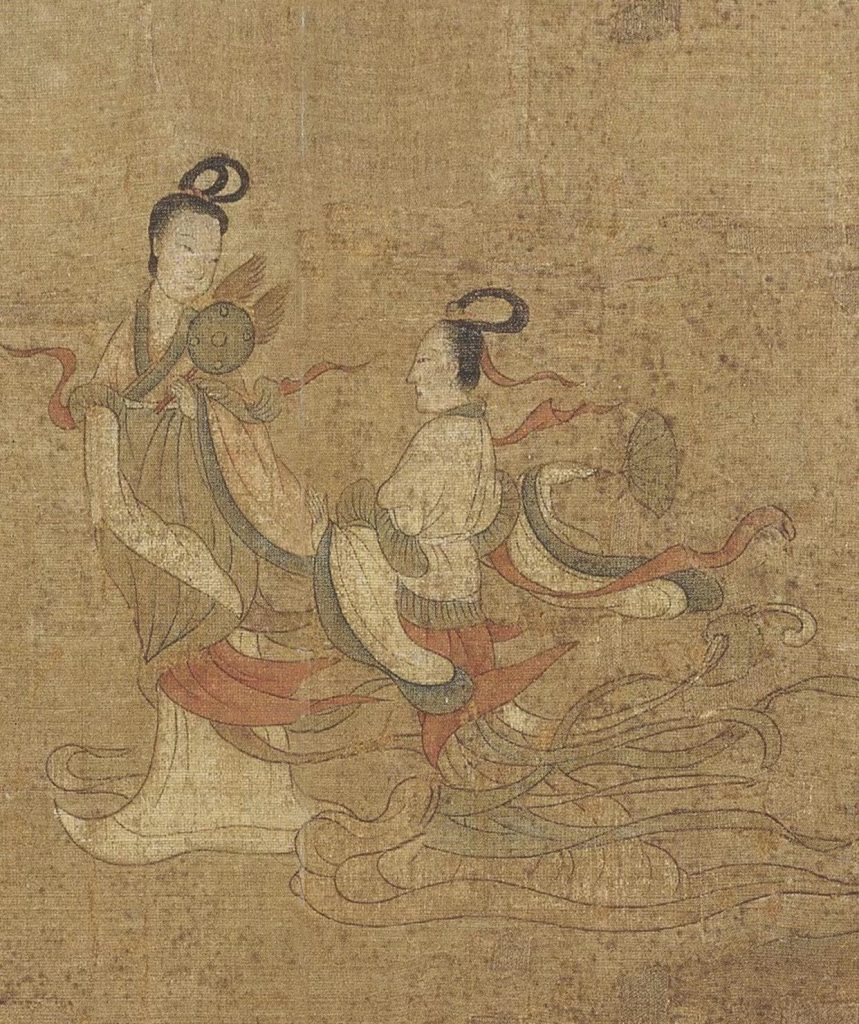
Introduction to the painting Nymph of the Luo River
Creative Background
Legend has it that Cao Zhi is the author of the poetry Nymph of the Luo River. He fell in love with Zhen Yi’s daughter when he was young. But Zhen Yi’s daughter was later forced to marry Cao Zhi’s brother. She died after giving birth to a son. Cao Zhi wrote poetry Nymph of the Luo River as a memorial after her death. Gu Kaizhi was so moved by this story, he painted a picture of Nymph of the Luo River.
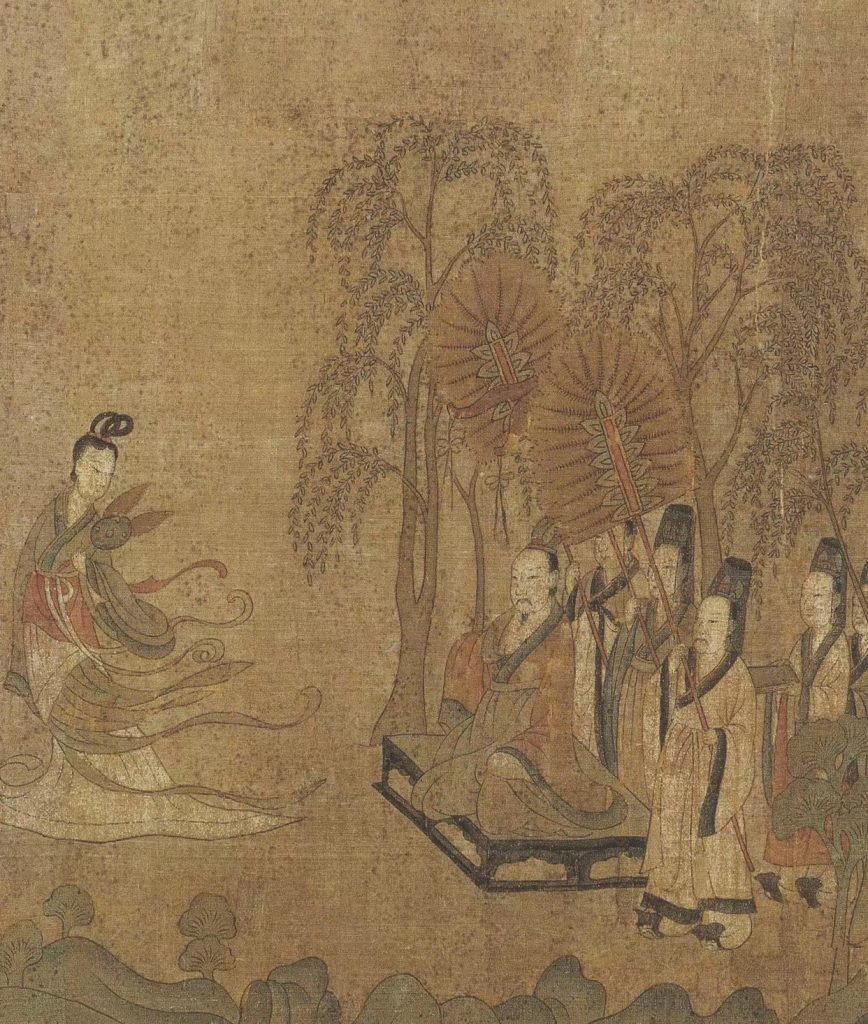
Figures
The main characters of this painting are Cao Zhi and Nymph. Cao Zhi, standing on the shore, has a stagnant expression, and his eyes are gazing at Nymph who stands on the water, very fascinated. Nymph, with her hair in a high bun and her clothes blown up by the wind, has a feeling of floating from the heavenly realm, and she wants to go but still stays, with a look of admiration between her eyes. Throughout the scroll, Gu Kaizhi repeatedly arranges for Cao Zhi to meet with Nymph, but even though she falls in love with Cao Zhi, Nymph eventually has to leave, leaving Cao Zhi standing on the shore, pining for her all day long, and ultimately departing in despair.
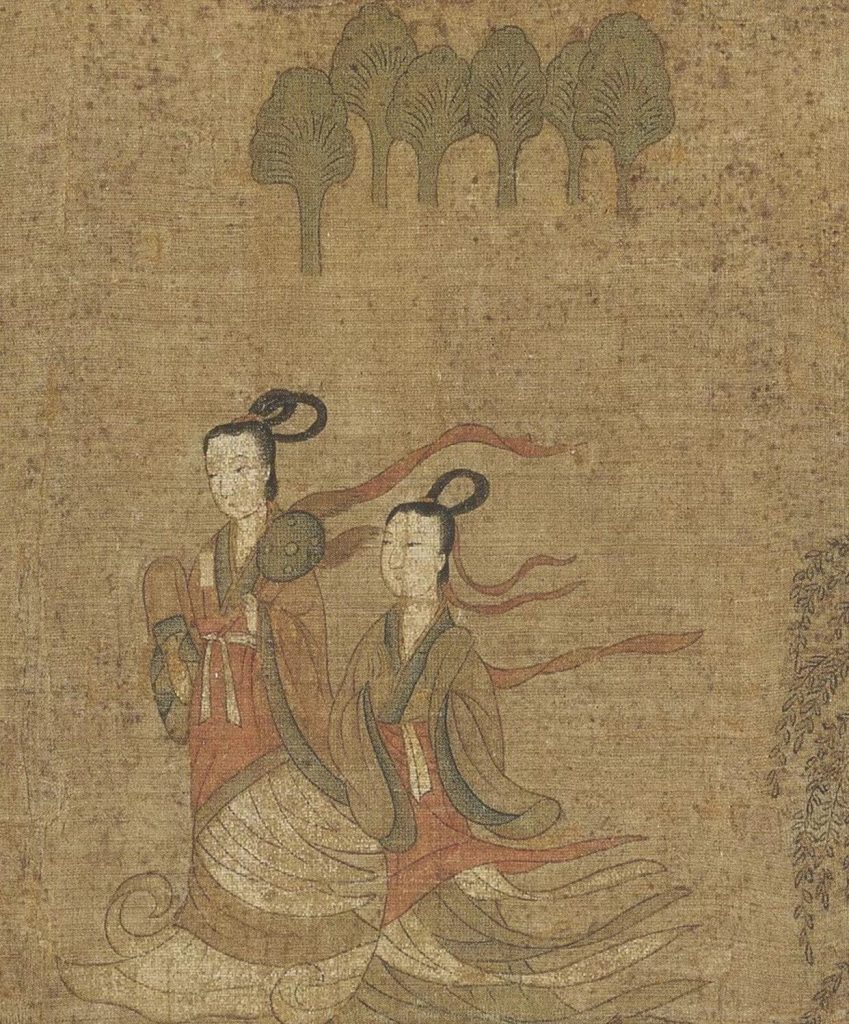
When Gu Kaizhi was portraying the characters, he deliberately handled Cao Zhi’s attendants in a dull manner, thus showing Cao Zhi’s excitement. What the audience sees at this point is Cao Zhi’s concentration and excitement, which is difficult to express in words. This is in line with Gu Kaizhi’s artistic philosophy. He believed that one should not only portray the character’s appearance, but also the character’s inner personality. This viewpoint had a great influence on the development of Chinese painting in the later period. It laid the foundation for the pursuit of ‘ depicting the spirit ‘ in Chinese painting.
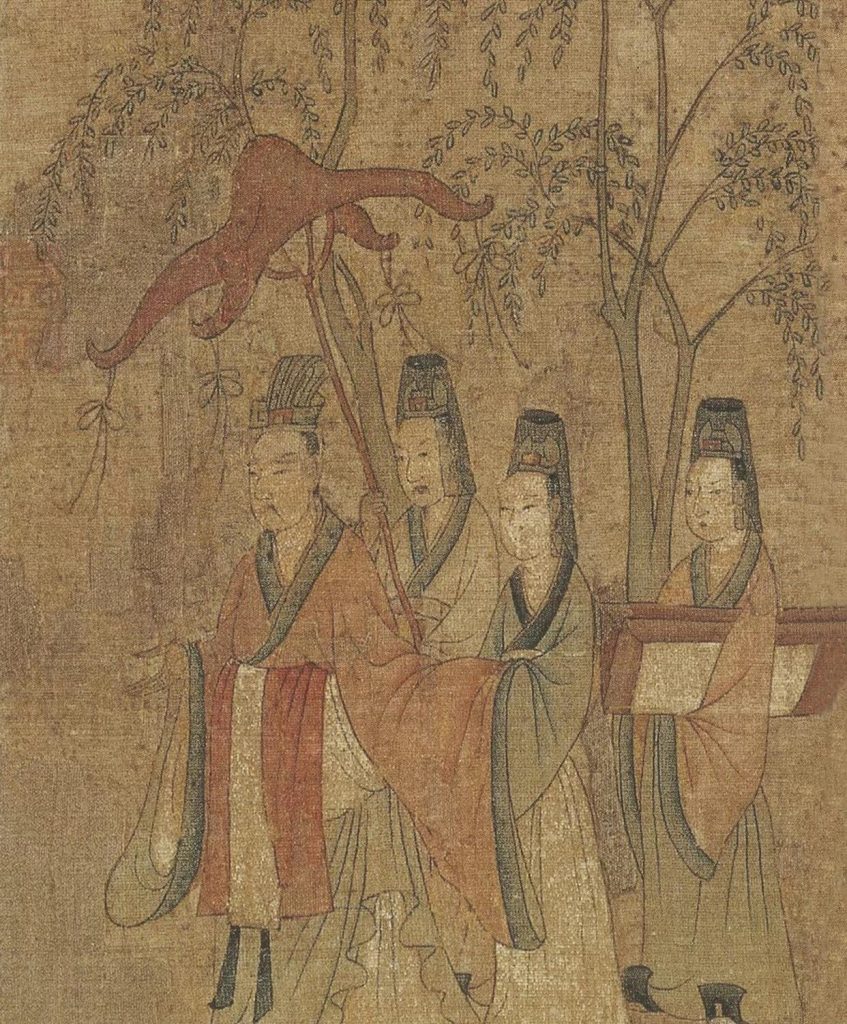
Landscapes
In this painting the relationship between the figures and the background is out of kilter, and the close-ups are not distinguished from the distant landscapes; the figures are as tall as the mountains. This was also the situation in early Chinese paintings and did not improve until the Sui and Tang dynasties.
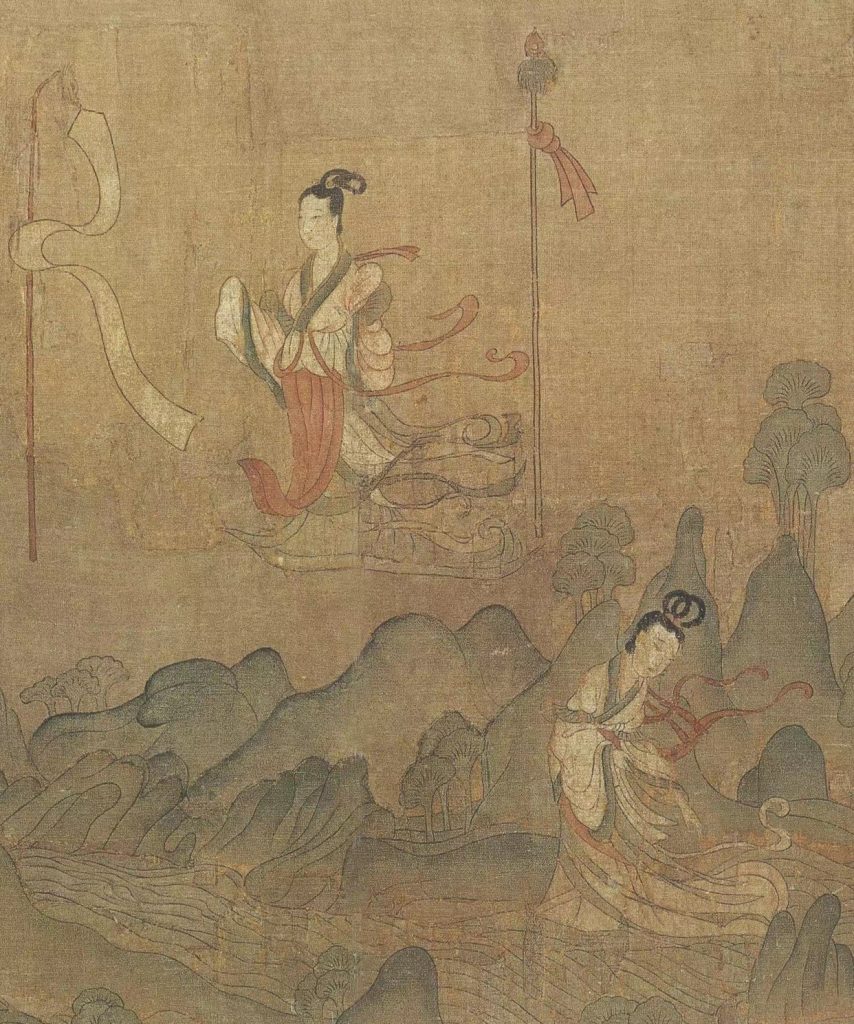
Animals
Gu Kaizhi created many rare birds and exotic animals based on the depiction of poetry Nymph of the Luo River. In fact, these animals didn’t exist in life . They were entirely imagined by Gu Kaizhi. For example, the dragons he painted had antlers, and the fish he painted had the head of a leopard. They run on the river without splashing, as if they were flying through the air.
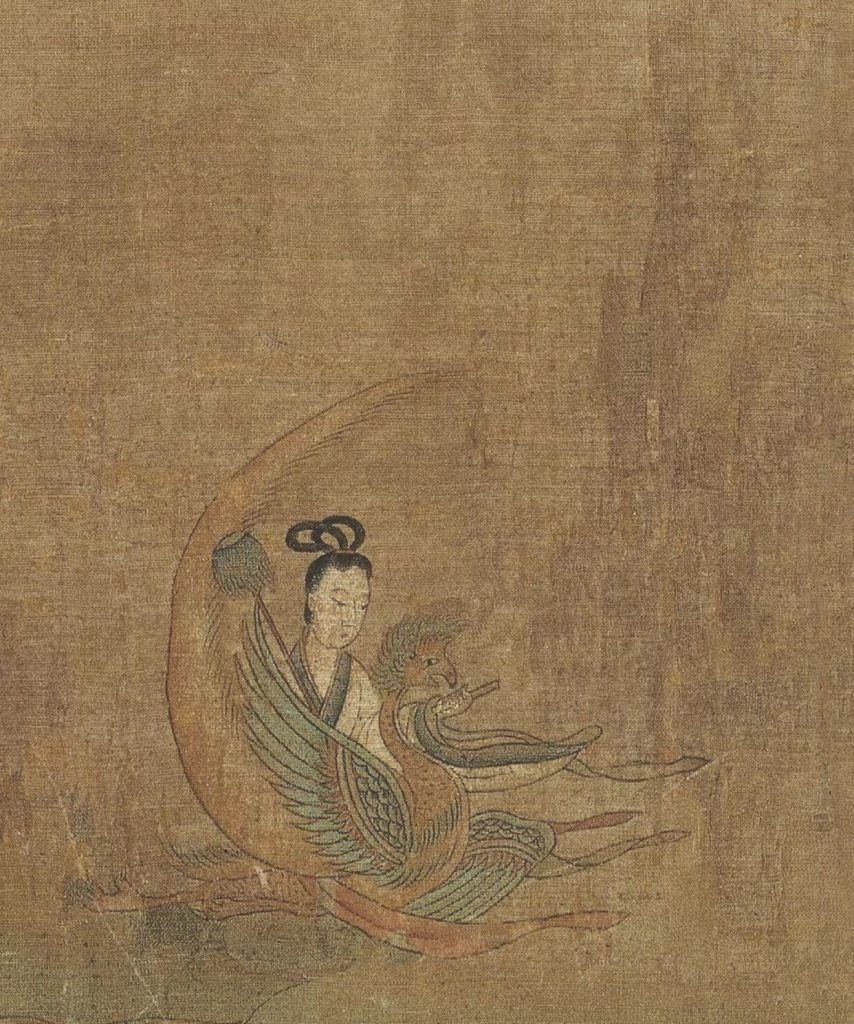
The significance of the painting Nymph of the Luo River
The painting not only represents the highest level of painting in the Eastern Jin Dynasty, but also Gu Kaizhi’s art theories influenced the development of Chinese painting in the later period, which made Chinese painting develop in the direction of paying more attention to the ” spirit “.
